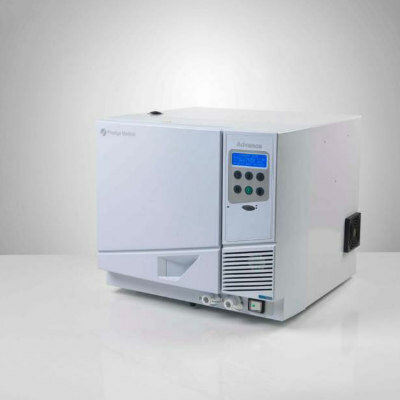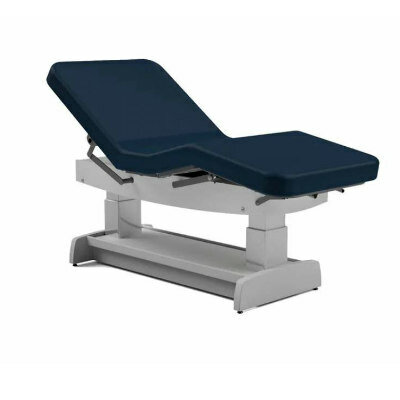Bioengineered Material Rapidly Stops Bleeding During Surgery in Patients on Blood Thinners
|
By HospiMedica International staff writers Posted on 24 Jan 2024 |

Anticoagulation and antiplatelet medications like heparin or aspirin, commonly taken by millions worldwide to treat heart attack and stroke, also elevate the risk of potentially fatal bleeding during injuries or surgeries. Globally, over five million people die annually from trauma, with more than a third of these deaths due to uncontrolled bleeding. Now, researchers have created a porous material that significantly absorbs blood and effectively initiates clotting, even in patients on these medications. Remarkably, this new hemostat managed to stop bleeding in an average of about five minutes in cardiac catheterization patients on anticoagulants, marking a substantial improvement from the lengthy traditional compression methods that can take more than two hours.
The research team, led by investigators from Brigham and Women’s Hospital (Boston, MA, USA), developed a more effective hemostat by employing a “rational engineering” approach. They simulated blood flow through various pore structures, drawing inspiration from the lung’s alveoli – spherical air sacs with a large surface area and a complex porous structure that enable efficient blood interaction. This guided them to design their material with a similar intricate, spherical microporous structure, optimizing blood absorption and the accumulation of vital clotting components like platelets.
Chitosan, a substance extracted from shellfish, forms the base of this alveoli-like structure. Already utilized in some hemostats, chitosan’s positive charge effectively attracts negatively charged platelets and fibrinogen, key blood clot components. The researchers discovered an additional benefit: chitosan activates the TLR-2 clotting pathway, directly stimulating clotting even in patients on anticoagulants. When tested on 70 patients undergoing cardiovascular catheterization and on heparin, the material reduced bleeding to an average stoppage time of about five minutes for low-dose heparin patients, and under nine minutes for those on up to 12,500 IU heparin doses.
The chitosan pad simplifies application and removal compared to traditional gauze, which often requires long, strong compression and can be painful and risky to remove. The chitosan hemostat, being more absorptive, can be removed more cleanly and comfortably from wounds. The research team is now exploring further advancements, including studying the wound healing process post-application of the chitosan hemostat and developing next-generation wound dressings capable of drug delivery or enhancing wound cleanliness, potentially reducing the frequency of dressing changes.
“This is a next-generation hemostat that effectively stops bleeding, even in patients who take anticoagulation or antiplatelet medications,” said corresponding author Hae Lin Jang, Ph.D., of the Center for Engineered Therapeutics. “We used an exciting, interdisciplinary approach that combines engineering principles, materials science, and understandings of molecular biology to overcome the limitations of existing therapies and address a real clinical need.”
“This hemostat can save valuable time in emergency situations,” added first author Vivian K. Lee, PhD, of the Center for Engineered Therapeutics. “In emergencies, it can be extremely challenging to screen the prescription information of a patient to provide appropriate anticoagulation reversal therapy to patients on anticoagulants. If a hemostat can bypass a medication’s anticoagulating mechanisms, it can be used in a wide range of patients, saving time, and potentially saving lives.”
Related Links:
Brigham and Women’s Hospital
Latest Critical Care News
- Deep-Learning Model Predicts Arrhythmia 30 Minutes before Onset
- Breakthrough Technology Combines Detection and Treatment of Nerve-Related Disorders in Single Procedure
- Plasma Irradiation Promotes Faster Bone Healing
- New Device Treats Acute Kidney Injury from Sepsis
- Study Confirms Safety of DCB-Only Strategy for Treating De Novo Left Main Coronary Artery Disease
- Revascularization Improves Quality of Life for Patients with Chronic Limb Threatening Ischemia
- AI-Driven Prediction Models Accurately Predict Critical Care Patient Deterioration
- Preventive PCI for High-Risk Coronary Plaques Reduces Cardiac Events
- AI Diagnostic Tool Guides Rapid Diagnosis and Prediction of Sepsis
- World's First AI-Powered Sepsis Alert System Detects Sepsis in One Minute
- Smartphone Magnetometer Uses Magnetized Hydrogel to Measure Biomarkers for Disease Diagnosis
- New Technology to Revolutionize Valvular Heart Disease Care
- Super Permeable Wearable Electronics Enable Long-Term Biosignal Monitoring
- New Hydrogel Features Enhanced Capabilities for Treating Aneurysms and Halting Progression
- New AI Tool Predicts Medical Events to Support Clinical Decision-Making in Healthcare Settings
- Bioelectronic Mesh Grows With Cardiac Tissues for Comprehensive Heart Monitoring
Channels
Artificial Intelligence
view channel
AI-Powered Algorithm to Revolutionize Detection of Atrial Fibrillation
Atrial fibrillation (AFib), a condition characterized by an irregular and often rapid heart rate, is linked to increased risks of stroke and heart failure. This is because the irregular heartbeat in AFib... Read more
AI Diagnostic Tool Accurately Detects Valvular Disorders Often Missed by Doctors
Doctors generally use stethoscopes to listen for the characteristic lub-dub sounds made by heart valves opening and closing. They also listen for less prominent sounds that indicate problems with these valves.... Read moreCritical Care
view channel
Deep-Learning Model Predicts Arrhythmia 30 Minutes before Onset
Atrial fibrillation, the most common type of cardiac arrhythmia worldwide, affected approximately 59 million people in 2019. Characterized by an irregular and often rapid heart rate, atrial fibrillation... Read more
Breakthrough Technology Combines Detection and Treatment of Nerve-Related Disorders in Single Procedure
The peripheral nervous system (PNS) serves as the communication network that links the brain and spinal cord to every other part of the body. It consists of two parts: the somatic nervous system, which... Read morePatient Care
view channel
Surgical Capacity Optimization Solution Helps Hospitals Boost OR Utilization
An innovative solution has the capability to transform surgical capacity utilization by targeting the root cause of surgical block time inefficiencies. Fujitsu Limited’s (Tokyo, Japan) Surgical Capacity... Read more
Game-Changing Innovation in Surgical Instrument Sterilization Significantly Improves OR Throughput
A groundbreaking innovation enables hospitals to significantly improve instrument processing time and throughput in operating rooms (ORs) and sterile processing departments. Turbett Surgical, Inc.... Read more
Next Gen ICU Bed to Help Address Complex Critical Care Needs
As the critical care environment becomes increasingly demanding and complex due to evolving hospital needs, there is a pressing requirement for innovations that can facilitate patient recovery.... Read moreGroundbreaking AI-Powered UV-C Disinfection Technology Redefines Infection Control Landscape
Healthcare-associated infection (HCAI) is a widespread complication in healthcare management, posing a significant health risk due to its potential to increase patient morbidity and mortality, prolong... Read moreHealth IT
view channel
Machine Learning Model Improves Mortality Risk Prediction for Cardiac Surgery Patients
Machine learning algorithms have been deployed to create predictive models in various medical fields, with some demonstrating improved outcomes compared to their standard-of-care counterparts.... Read more
Strategic Collaboration to Develop and Integrate Generative AI into Healthcare
Top industry experts have underscored the immediate requirement for healthcare systems and hospitals to respond to severe cost and margin pressures. Close to half of U.S. hospitals ended 2022 in the red... Read more
AI-Enabled Operating Rooms Solution Helps Hospitals Maximize Utilization and Unlock Capacity
For healthcare organizations, optimizing operating room (OR) utilization during prime time hours is a complex challenge. Surgeons and clinics face difficulties in finding available slots for booking cases,... Read more
AI Predicts Pancreatic Cancer Three Years before Diagnosis from Patients’ Medical Records
Screening for common cancers like breast, cervix, and prostate cancer relies on relatively simple and highly effective techniques, such as mammograms, Pap smears, and blood tests. These methods have revolutionized... Read morePoint of Care
view channel
Critical Bleeding Management System to Help Hospitals Further Standardize Viscoelastic Testing
Surgical procedures are often accompanied by significant blood loss and the subsequent high likelihood of the need for allogeneic blood transfusions. These transfusions, while critical, are linked to various... Read more
Point of Care HIV Test Enables Early Infection Diagnosis for Infants
Early diagnosis and initiation of treatment are crucial for the survival of infants infected with HIV (human immunodeficiency virus). Without treatment, approximately 50% of infants who acquire HIV during... Read more
Whole Blood Rapid Test Aids Assessment of Concussion at Patient's Bedside
In the United States annually, approximately five million individuals seek emergency department care for traumatic brain injuries (TBIs), yet over half of those suspecting a concussion may never get it checked.... Read more
New Generation Glucose Hospital Meter System Ensures Accurate, Interference-Free and Safe Use
A new generation glucose hospital meter system now comes with several features that make hospital glucose testing easier and more secure while continuing to offer accuracy, freedom from interference, and... Read moreBusiness
view channel
Johnson & Johnson Acquires Cardiovascular Medical Device Company Shockwave Medical
Johnson & Johnson (New Brunswick, N.J., USA) and Shockwave Medical (Santa Clara, CA, USA) have entered into a definitive agreement under which Johnson & Johnson will acquire all of Shockwave’s... Read more
















